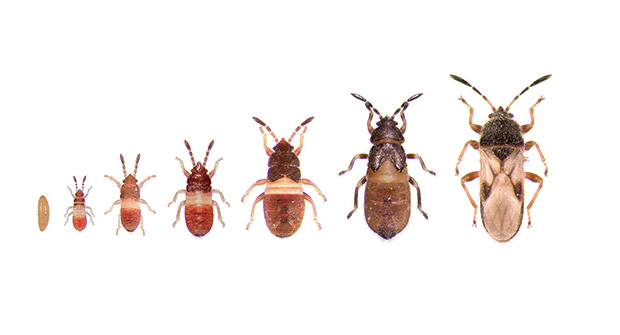A classic self-care tip these days is to cut toxicity from your life, and in the landscaping industry, that can be taken literally.
First up on the chopping block are chinch bugs (Blissus leucopterus), a pesky insect found throughout most of North America that feeds on turf and literally attacks it with toxins designed to clog vascular tissues and block water and food from moving throughout the plant.
Chinch bugs most often come in one of two variants, with the common chinch bug being found anywhere from the Midwest and western U.S. down to Virginia and Georgia. The hairy chinch bug has some overlap with the common variant but also can cause havoc in northern states and into Canada.
In these areas, chinch bugs will devour many kinds of turfgrasses, including Kentucky bluegrass, fescues, perennial ryegrass, bentgrass, zoysiagrass, St. Augustinegrass and more.
X marks the spot
Craig Zeigler, president and owner of Agronomic Lawn Management in Chesapeake, Va., says chinch bugs are tiny — only a few millimeters to a fifth of an inch long — meaning identifying them is tricky.
“You have to look pretty quick when you’re looking for them. You pull the turfgrass layer open, and they move really quick down into the thatch layer,” Zeigler says. “They really like excessive thatch.”
Chinch bugs are thin and defined by a white, almost X-like pattern on their back. Zeigler says they can also be spotted running along driveways or sidewalks if the damaged turf is nearby.
Hot, dry conditions and direct sunlight are also key environmental factors for chinch bugs to thrive in. As a result, they’ll typically avoid shaded areas, and damage that ends at or borders shade lines can be used as an extra clue.
Control the problem
Chinch bug damage can occur throughout the summer and even into September, and it often gets confused for drought stress due to it happening in the hot, sunny months. Zeigler says turf will turn yellow and brown before dying, and the turf will become brittle due to the bugs’ constant feeding.
Another mistake that can promote chinch bug infestations is overfertilization. Chinch bugs thrive in excess thatch, and fertilizing too much often doesn’t give the thatch enough time to decompose, leading to buildup.
“Some guys will fertilize extra because it looks greener, but then you get the issues where you’ll get that thatch buildup,” Zeigler says. “That’s just inviting them to come in, make it home, and they can feed off that plant.”
That’s why Zeigler recommends proper turf maintenance as one of the best ways to prevent these pests. Proper fertilization, summer aeration and verticutting are just some of the practices Zeigler says can keep turf healthy and resistant to chinch bug invasions.
And while Zeigler usually uses chemical controls for chinch bugs as a reactionary treatment, he says imidacloprid insecticide can be used as a preemergent. Once they take root, however, Zeigler uses bifenthrin to get rid of them without too much hassle.
“We’ve always treated it with bifenthrin,” he says. “When you do get (chinch bugs), it’s like you treat them and they just kind of go away, and then the plant will recover. But if it goes untreated, it can kill the turf.”
Related articles
Keeping chinch bugs out of your turf


